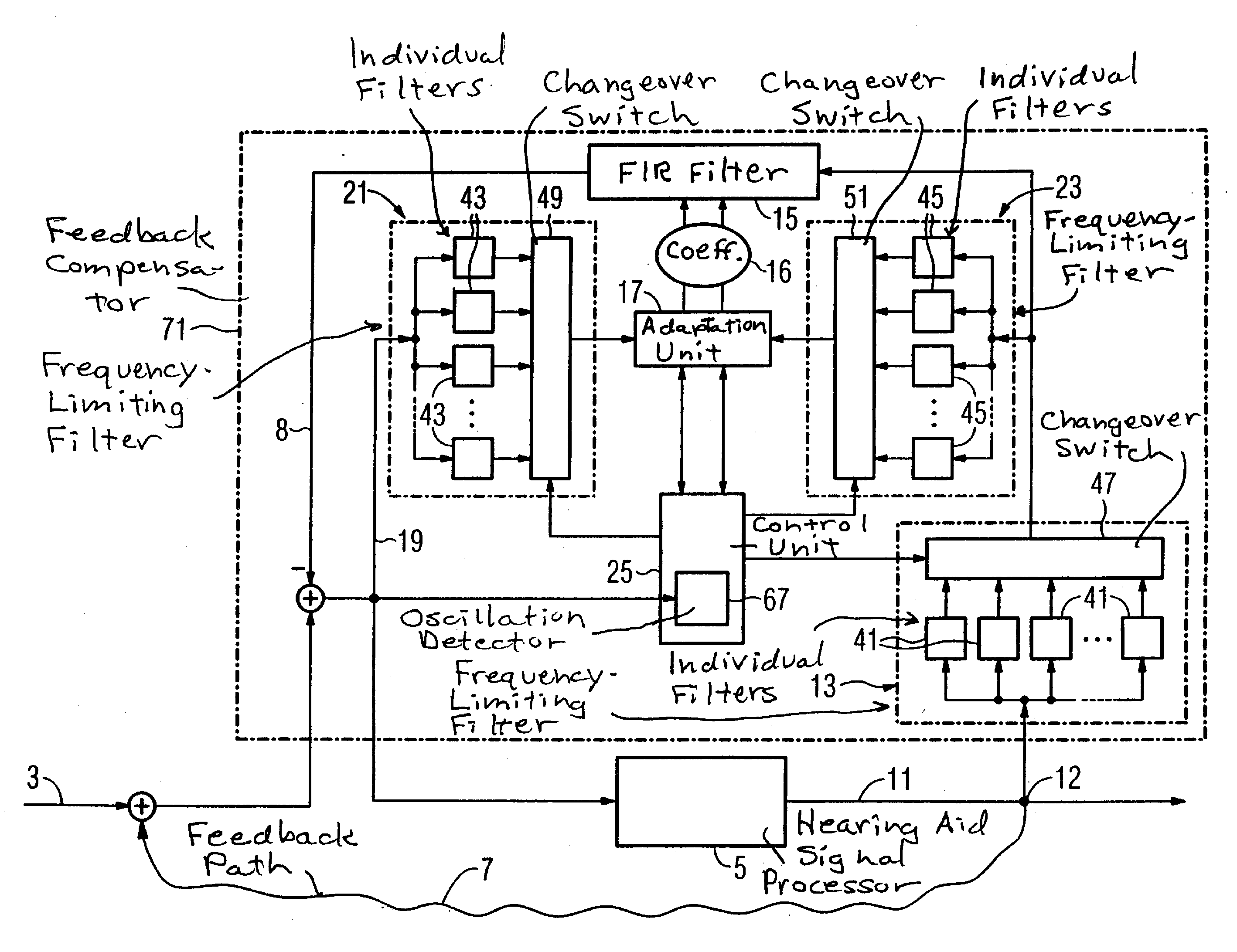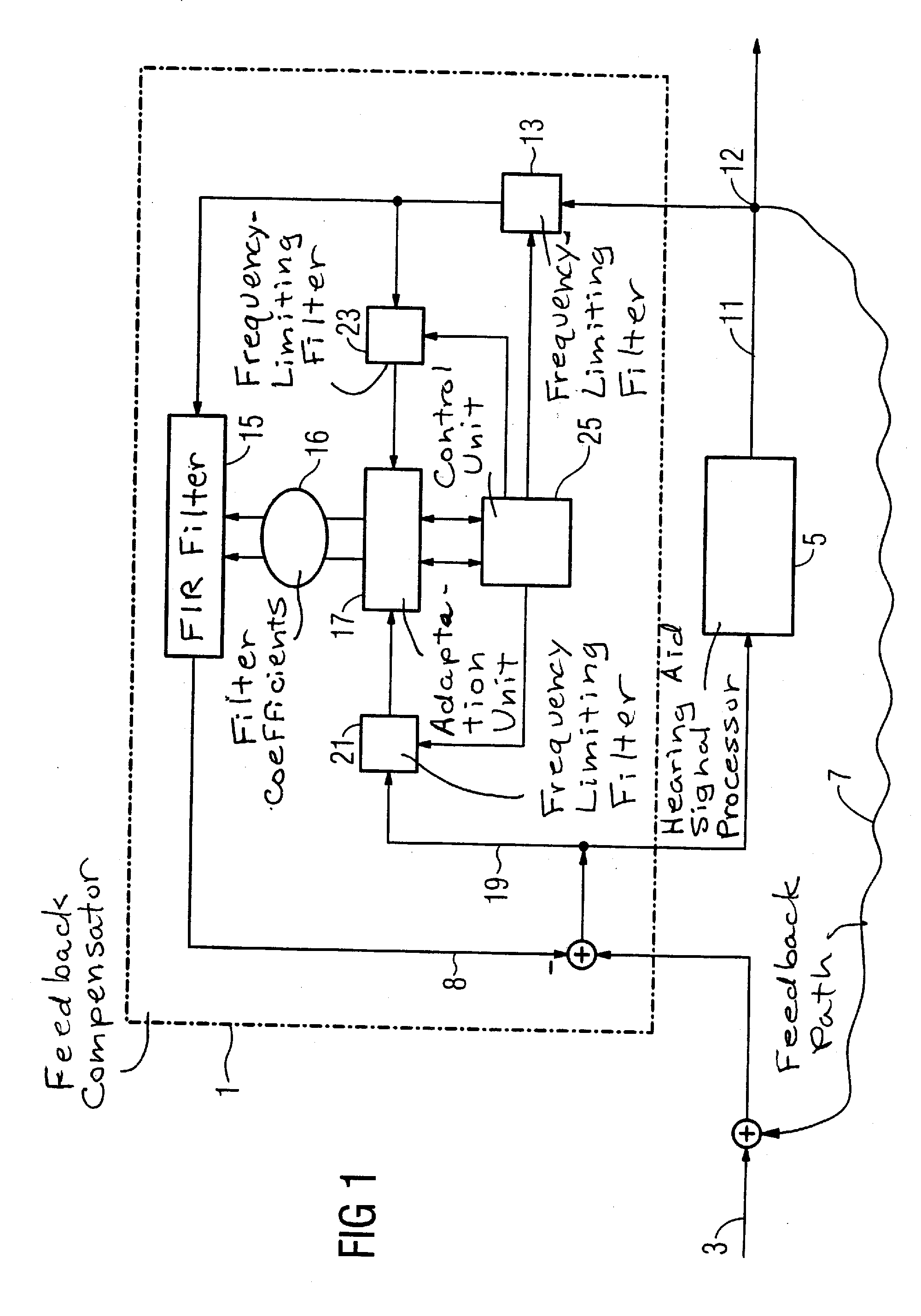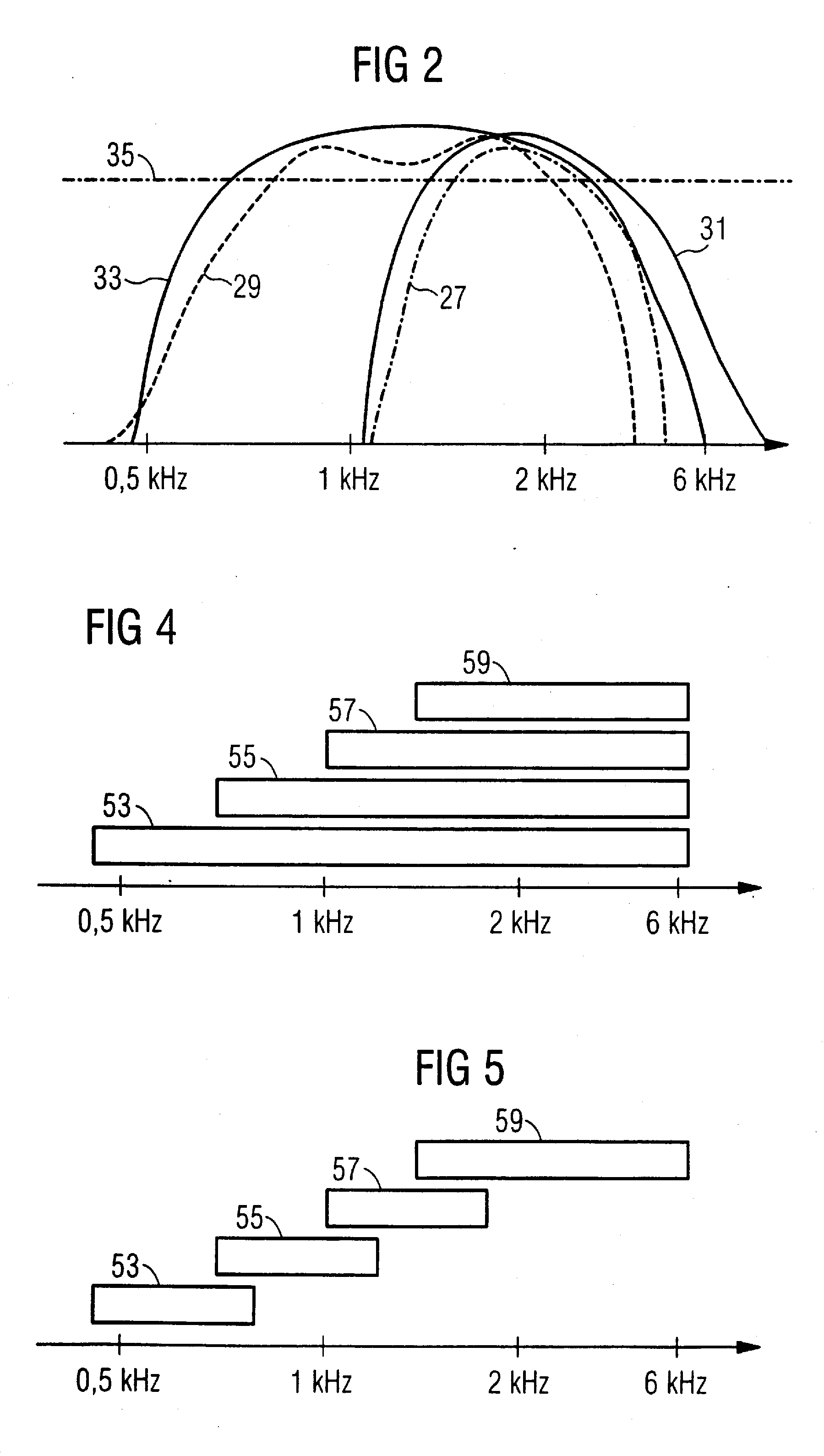Feedback compensation method and circuit for an acoustic amplification system, and hearing aid device employing same
a technology of acoustic amplification and compensation method, which is applied in the direction of deaf-aid sets, transducers acoustic reaction prevention, electrical apparatus, etc., can solve the problems of reducing the usefulness of hearing aid devices for wearers, unwanted acoustic feedback between auditory transducers and microphones, and beyond the stability limit of amplifiers, so as to achieve effective and rapid feedback compensation and high sound quality
- Summary
- Abstract
- Description
- Claims
- Application Information
AI Technical Summary
Benefits of technology
Problems solved by technology
Method used
Image
Examples
Embodiment Construction
[0045]FIG. 1 is a schematic overview of a feedback compensator 1 that also enables a qualitatively good amplification of an acoustic input signal 3 with a hearing aid device signal processor 5, in the event that a feedback path is present, the frequency range of which can change due to varying external conditions. The feedback path 7 is, for example, determined by the diameter and by the position of the ventilation aeration holes of an in-the-ear hearing aid device as well as by an imperfect termination of the in-the-ear hearing aid device with the ear. Changes of the feedback path 7 also ensue when the acoustic surroundings change, for example when a helmet is put on or taken off.
[0046]The feedback compensator 1 is able to adapt the frequency range of the compensation signal 8 to the changing frequency range of the feedback path 7. For this, the feedback compensator 1 generates the compensation signal 8 in the following way. A small part of the output signal 11 of the hearing aid d...
PUM
 Login to View More
Login to View More Abstract
Description
Claims
Application Information
 Login to View More
Login to View More - R&D
- Intellectual Property
- Life Sciences
- Materials
- Tech Scout
- Unparalleled Data Quality
- Higher Quality Content
- 60% Fewer Hallucinations
Browse by: Latest US Patents, China's latest patents, Technical Efficacy Thesaurus, Application Domain, Technology Topic, Popular Technical Reports.
© 2025 PatSnap. All rights reserved.Legal|Privacy policy|Modern Slavery Act Transparency Statement|Sitemap|About US| Contact US: help@patsnap.com



